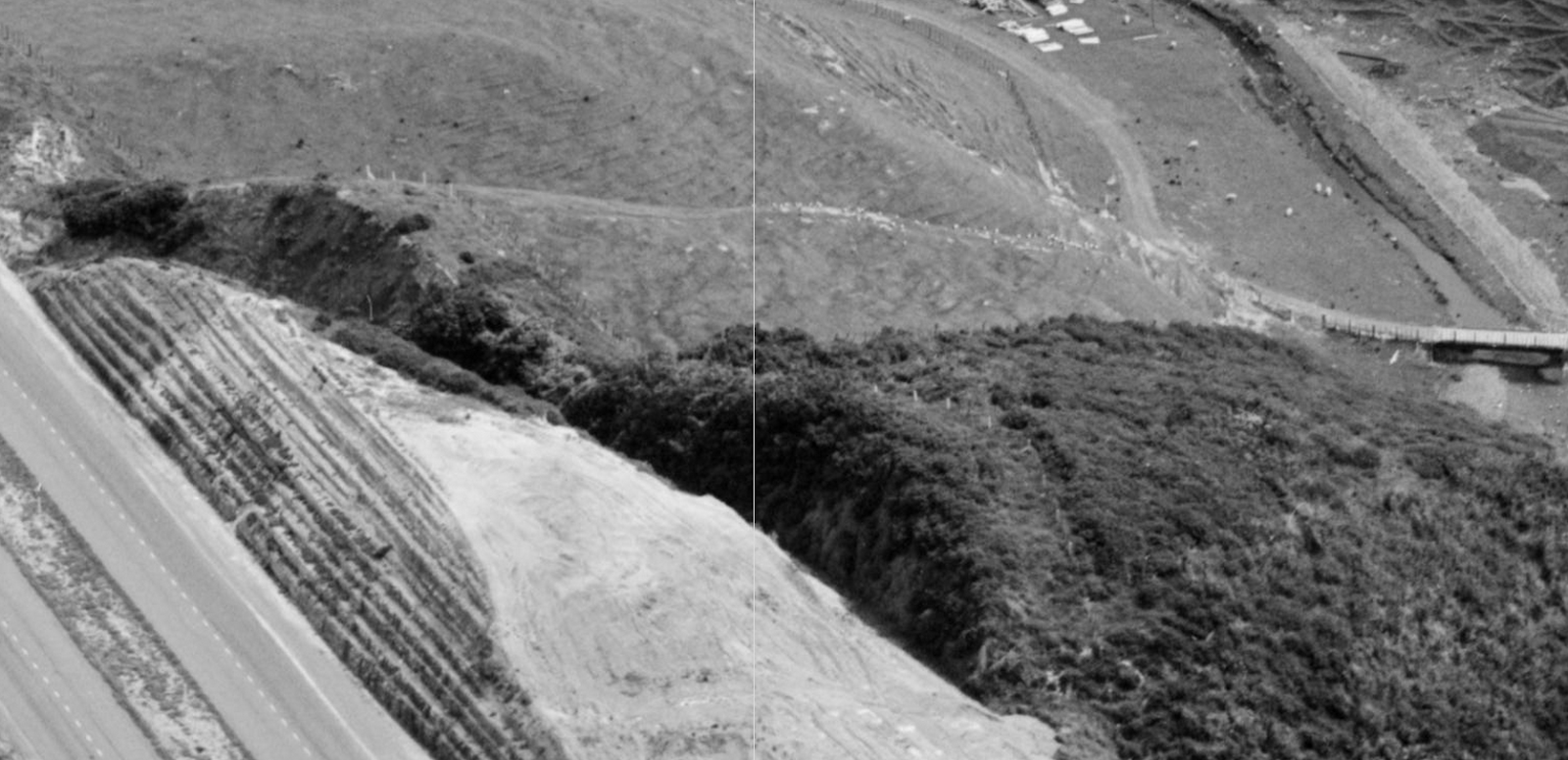Well time for another update on this section. The section of the deviation and former alignment at the Tawa end is covered by this post as I have spent the past few days completing the aerial photo mosaic for Tawa. It still has at this time to be masked and then turned into map tiles for Qgis which will take the rest of the weekend. That is not laborious hours of work. The masking is relatively quick (maybe a couple of hours) and straightforward to add. The slow part is the tiling as the computer will grind away at a snail's pace to capture the area of each tile and then render it into two separate files. Based on the previous experience with mosaics of this size (this one is 22 layers in total, which comes down to about 18 tiles, probably of which 15 will be rendered into maps), it can take 30 minutes per tile just because of the memory and disk demands on the computer. Here you can understand why I want a computer that has 32 GB of RAM, and probably 250 GB of SSD for buffering as well, because it will greatly speed up this task and mean I don't spend a whole day listening to the disk churning on the computer processing the aerials. That 30 minutes is mostly waiting time, so I can do something else while that is happening, but it is just the waiting that gets annoying. It explains why it took me three days to render the tiles out of the Johnsonville mosaic and some of the big ones I did for Christchurch already.
Anyhow here is some of the key aerial photography that has been used in this section.

Of particular note here are the horseshoe curves at what is now Takapu Road Exchange on the motorway. These curves are executed in order to lose a reasonable amount of height in a shorter longitudinal distance. Whilst I can't exactly pin down where this was in terms of the gradient diagram found in Ken Cassells' book (I have his one plus Douglas Hoyt's one to refer to as well), the ruling gradient of this area was 1 in 56. The gradients eased out somewhat upon reaching Tawa Flat, but did not really stop until Porirua. Assuming the part of the section from Tawa Flat to Porirua that was still in use after 1937 has not been changed since then, southbound trains leaving Porirua still have to undertake modest ascents at up to 1 in 150 gradients before they reach the southernmost end of the deviation. A major landmark above the Takapu Road overbridge which you can see on this map is what is now known as Arohata Prison, built in 1944 which is the same year as these aerials were taken.

In this map you have towards the left, the site of the old Tawa Flat station on the hillside above and to the left of the present day Tawa station. Continuing towards the right the junction of the two sections of track can be observed.
This one is what you can download from ATL these days and it is Tawa at the time the motorway was under construction, therefore around 1951. The present day Tawa is right at the bottom of the image. The next three images are captures from the live version of this, zoomed in.
Here is a view down from Takapau Road towards Tawa. This area is mostly built on with housing between the motorway and the old railway.
Here at the bottom centre of this image is the old Tawa station and you can also see in particular Tawa Street crossing the deviation on a level crossing after having just crossed the stream via a bridge. Then you have Duncan Street between the old and new railway lines, this was the route it then followed, before it was eventually straightened by taking over the old rail corridor
Finally we have the rail route down towards Tawa as it presently is, not visible because Duncan St had already taken over that part of the corridor north of the old Tawa Flat station. In the very bottom of the picture we can see the present Tawa station with its pedestrian overbridge and part of the platform. There is still an overbridge there today although modernised.



















































